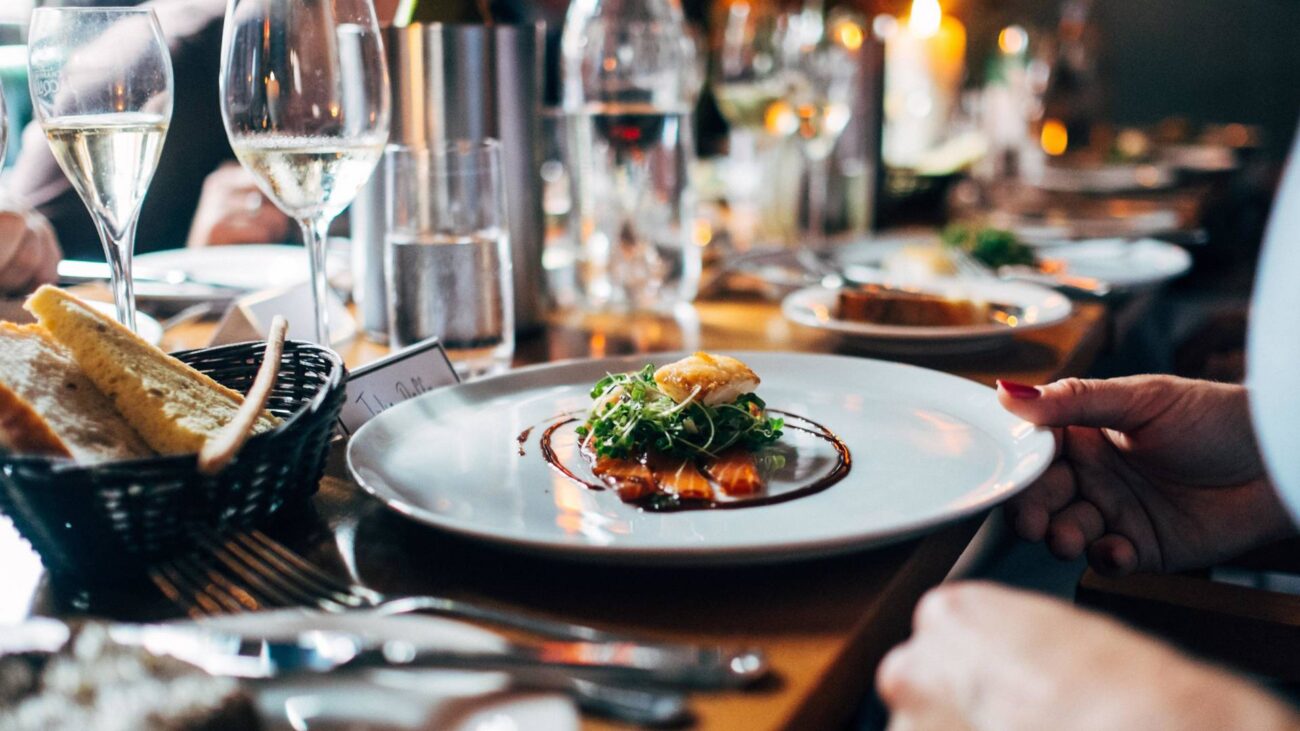Poland’s Food Revolution: From Milk Bars to Michelin Stars
Pierogis stuffed with polish mountain cheese,

served with a morels reduction (Bottiglieria 1881 restaurant in Krakow), beef tartare, roquefort, pearl onion, sherry, red pine mushroom (Muga in Poznan), almond rhubarb soup with sorrel (Nuta in Warsaw)…these are just a sampling from tasting menus at Poland’s 2023 Michelin-star restaurants.
Poland’s best known dishes reflect its long history as a major East-West crossroads and the influence of the diverse cultures that settled and passed through here. Before World War II, Polish chefs were known for their artistic presentations and creative flavors.
Communism put a stop to all that. With fancy cuisine viewed as decadent and meat unaffordable, milk bars took hold, named for the dairy that was the base of their meals. In recent years, menus and quality expanded. Now, these often trendy eateries are akin to U.S. diners, serving quality meals at reasonable prices.
Propelling Polish cuisine onto the global stage, this year Poland claimed its first-ever two Michelin-starred restaurant—plus two single-starred establishments and seven Bib Gourmand, a designation celebrating good food at reasonable prices. With 49 recognized restaurants in all, Poland is perfect for foodie-inspired itineraries.
Guided tours—on foot, bicycle, e-scooter and Segway—often combine main attractions with tastings at restaurants and markets. There’s also a wealth of cooking classes and vodka and craft beer tastings.
Here are three ideal destinations for clients seeking to sample Michelin-recognized restaurants and distinctive culinary scenes in fascinating settings.
https://www.ricksteves.com/europe/poland/krakow – Kraków, the European Capital of Gastronomy Culture in 2019, has 18 Michelin-recognized restaurants. Bottiglieria 1881, Poland’s only two-star establishment, especially prides itself on its artistic, all-senses presentation.
The only Polish city not bombed to the ground during World War II, Krakow has a lively Old Town square dating back to the 1200s while its 200,000-plus university students add to the city’s creative, cultural vibe.
Lively Market Square is home to Cloth Hall, an ornate Renaissance trading center with friendly shops and eateries offering pierogi with fillings from classic potato and cheese to savory meat and mushroom, and Obwarzanek, a large, chewy pretzel flavored with sesame and smoked sheep’s cheese called Oscypek, often topped with jam.
Nearby is Wawel Hill and the Royal Castle, now an important art museum. Not to be missed is Wierzynek, a 14th-century restaurant with knights armor and stained glass windows. Like Krakow, it combines authentic history with wonderful Polish cuisine.
Warsaw, the nation’s capital and largest city, imbues its cuisine with big-city energy and creativity. Its 19 Michelin-recognized restaurants include the Michelin-starred Nuta, which adds Italian and Asian accents to Polish cooking. And for a glimpse of Soviet days, Czerwony Wieprz (Inn Under the Red Hog), serves Polish favorites amid photos of Lenin and others notables who have dined here.
Local markets, filled with chic eateries, shops, galleries and often, museums include Old Town’s Art Nouveau https://www.koszyki.com/home-en-us – Hala Koszyki and breakfast markets in Zoliborz and Mokotow. And don’t forget street food specialties like Warsaw-style herring.
The city was practically flattened by the Nazis. Today, Old Town, painstakingly reconstructed, stands amid skyscrapers, sleek glass and chrome buildings and communist-era “Brutalist” block architecture.
History buffs will want to visit the Polin Museum of the History of Polish Jews, the Warsaw Uprising Museum and the Royal Castle, where Europe’s first constitution was signed in 1791. And no trip is complete without a stroll along the city walls for vistas of this ever-changing, delicious city.
Poznan, is a hidden gem for foodies. About 2.5 hours by express train from Warsaw, this 1,000 year-old city of just over 500,000 people has 11 Michelin-recognized restaurants, including two with Bib Gourmand (good value) status and Muga, the city’s first to earn a Michelin star.
Poznan’s signature sweet is the St. Martin croissant, a crescent moon of pastry dough filled with white poppy seed and almond-paste filling drizzled with icing. Learn all about them and make your own at the Croissant Museum.
Other specialties like Poznan-style duck with potato dumplings, baked apple and red cabbage can be enjoyed in the brightly-painted buildings laid out around the grand Market Square and lining the narrow streets of the picture-perfect medieval Old Town.
Other gastronomic areas of interest include Pomerania (Gdansk), Silesia (Katowice) and the cities of Lodz, Poznan and Wroclaw. Those who take the time to explore and savor the flavors of Poland are well rewarded. And who knows, you just might discover the next rising (Michelin) star!
For more information visit: www.poland.travel/en




